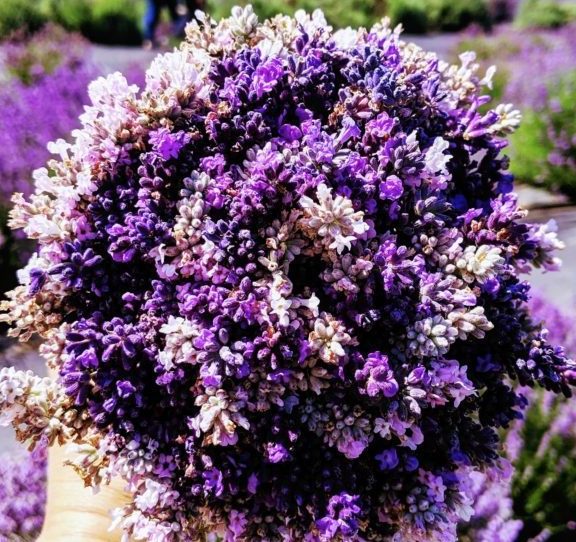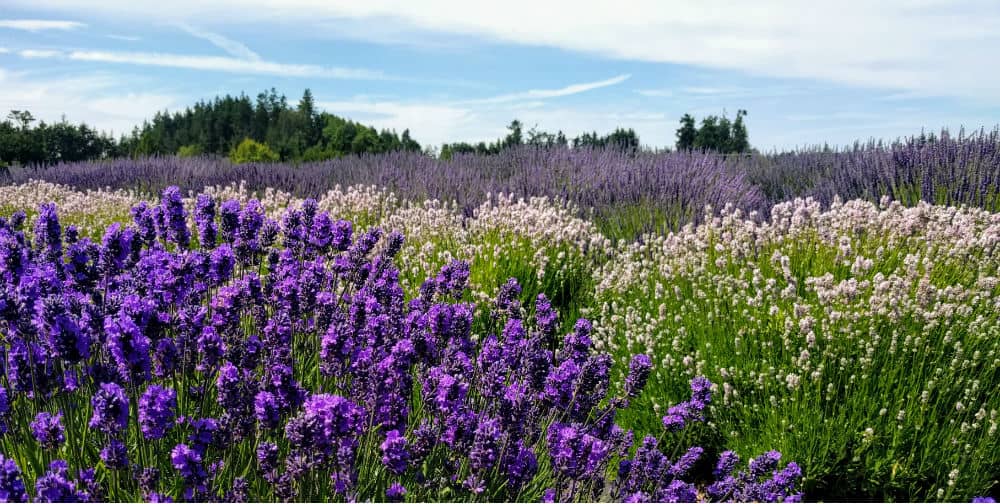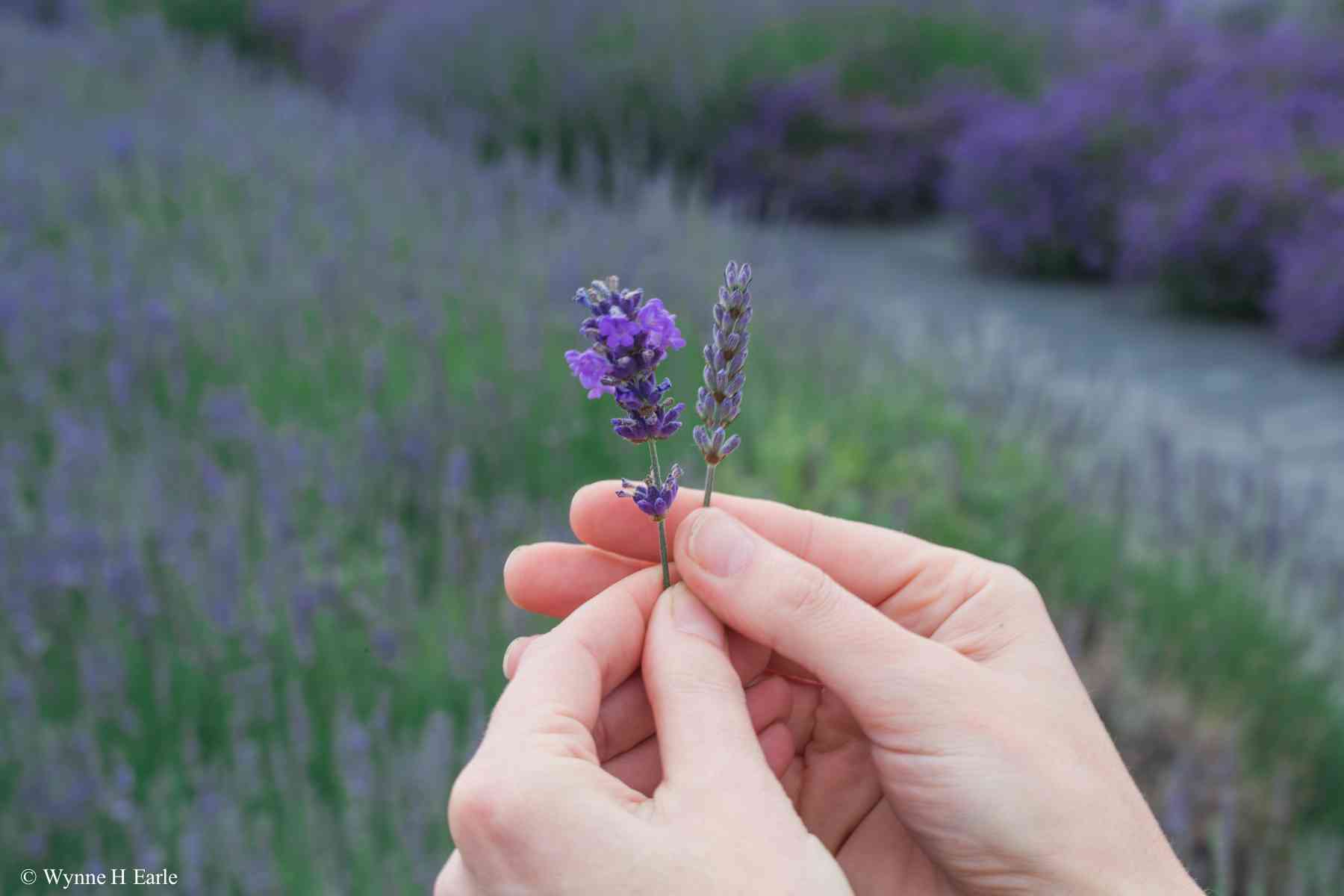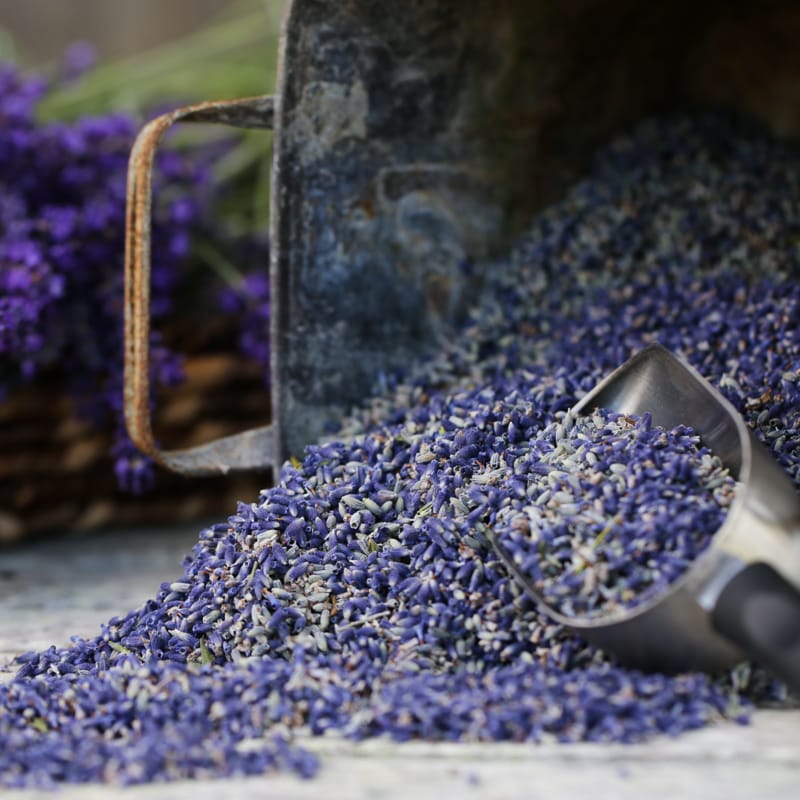One of the unique things about Lavender Connection farm is the number of different lavender varieties we have (40 at last count!) Not only does this make an exquisite background for photos, most of the varieties are available to customers for U-Cut bouquets – and we aren’t too humble to boast that our beautiful bouquets are the best. Bam.

Most guests who visit are surprised by how many different varieties there are. There are actually hundreds of varieties of lavender, from over 40 different known species and subspecies. One of the most common questions we get from our guests is “I see your signs show each variety as either an angustifolia or intermedia – what does that mean, and what is the difference?”
Two of the most common species of lavender are lavandula angustifolia or "true lavender" and a hybrid lavandula intermedia or "lavandin" (which is a hybrid of angustifolia and latifolia).
Two of the most common species of lavender are lavandula angustifolia or “true lavender” and a hybrid lavandula intermedia or “lavandin” (which is a hybrid of angustifolia and latifolia). These types of lavender also have a lot of colloquial names, like “English Lavender” and “French Lavender” but common names for lavender have been used for so many centuries they’ve become muddled. For example, Spanish and English Lavender are both native to France, Spanish Lavender is also known as Italian Lavender, and French Lavender is native to Spain. In order to avoid inevitable confusion and the subsequent lavender bath to recover, it’s best to use their Latin names.
So, here we go. What is the difference? Like good wine, every variety has its unique properties based on plant, terroir, and farming practice. However, there are some generalizations you can make.
Like good wine, every variety has its unique properties based on plant, terroir, and farming practice. However, there are some generalizations you can make.
Visually, you can easily see the difference between the two types: angustifolias tend to grow as a small, dense plant with short stems (I say they’re “short and fat” but Farmer Rick is more eloquent), and intermedias are typically larger and taller, with long, slender stems. In the image below, you can see rows of light pink and dark purple angustifolia in front, and then tall rows of intermedia in the background.

On the stem, the flowers mimic the bush: the angustifolia flowers grow in short fat clumps (ha! I snuck it in!) where the intermedia flowers have tighter buds that grow longer down the stem. In the image below, the angustifolia is the flower on the left, and the intermedia is the flower on the right.

If you smell the two types right next to each other, you can also smell a difference. Camphor is one of the most recognizable scent components of lavender, and all lavender contains some camphor. However, the amount differs between species.
The scent of intermedia lavender closely resembles what most people consider “lavender” – it is commonly used for perfumes, aromatherapy, and bath & body products, and is typically what we use in our products. It has a floral but spicy scent, with a noticeable hint of camphor.
Angustifolia has a sweeter, more floral or grassy smell, with no noticeable camphor fragrance. Angustifolia is also very popular for aromatherapy and bath & body products, but because it doesn’t have significant camphor, angustifolias are also used for culinary. All lavender is edible and will not hurt you, but intermedia has a medicinal aftertaste, which is why we avoid eating it. Angustifolia, however, is delicious.
Within these two species there are hundreds of varieties, ranging in color from white, to pink, to dark purple, with numerous shades in between – so color is not a primary way of identifying whether you are looking at an angustifolia or intermedia. Fun sidenote: some species of lavender (namely Spanish Lavender, or lavandula stoechas, or “that lavender that looks like a pineapple with wings on the top”) are rumored to have green, hot pink, and yellow varieties, but we cannot confirm or deny these conspiracy theories because we do not personally grow them. If you want to see a lavandula stoechas at our farm, we encourage you to visit our farm and A) butter up Farmer Rick who for some inexplicable reason disdains Winged Lavender, and then B) ask that a variety of lavandula stoechas be included in our annual Customer Choice vote.*
There are numerous other differences between angustifolia and intermedia (propagation vs. growing from seed, oil production) but we’ll address those in future posts. Since most customers are eager to get out to the field and start cutting at this point, I release them to go take their 8,000 photos and cut the perfect bouquet with all the different varieties – so I’ll leave you now, gentle reader, to scamper around in your own garden to determine which type(s) of lavender you are sporting. If you can’t figure it out, tweet us a photo and ask Farmer Rick for help! #AskFarmerRick
*My nefarious plan worked! In 2017, our customers chose a lavendula stoechas – “Kew Red” – for our customer choice field. In addition, we planted a yellow lavendula stoechas in our front garden.
pssssst – Thanks for reading our blog! Curious about our natural lavender bath & body products? Enter code ehma3jd6 at checkout for 5% off your next bath & body order at our online store!

7 Replies to “Lavandula Angustifolia vs. Intermedia”
Sally
Love this. A fun “lesson” in lavender. What a great addition to the site. Love you all and the farm.
Yvette
Excellent info! We planted lavender in our home garden this year and were wondering about exactly these questions while standing in a plant nursery. I think we have intermedia.
Will #askfarmerrick next time.
Barret McDermid
Hey, great post. We are a South African x British family living in France. We are beekeeper and are thinking of starting a small lavender farm (2300m²) We want to branch out into soaps and oils. We have been told by our local garden centre that intermedia will grow better in our area but he is not sure what is will be like for extracting oil? What would be your opinion on intermedia vs English lavender in this regard? Thank you 🐝😊
Rebecca Olson[ Post Author ]
Barret – great question! Your local garden center is correct: lavandula x. intermedia essential oil is the worldwide leader for bath, body, and home products. The primary reason is that intermedia plants produce more oil per plant than angustifolia – sometimes significantly so (we have some intermedia varieties that produce 3-4 times more oil per run than an angustifolia). Thus, the oil is less expensive to purchase and/or a higher price point for your products if you are distilling it yourself. Because this type of lavender is the lavender most commonly used, it’s also the scent customers are familiar with and expecting. For these reasons, while the angustifolia oils are lovely and would make great oil for products, the intermedia is your best bet. The most common intermedia variety used in products is probably “Grosso” – though there are many others we like as well. I’m not sure what your garden center has available for you. I recommend researching which intermedias grow best in your area, and then based on that list, which ones farmers like for oil. Though honestly – I’ve never smelled an intermedia I didn’t like. Good luck!
Culinary Lavender: What is culinary lavender? | Lavender Connection
[…] lavandula intermedia does have noticeably more camphor in it than angustifolia (check out our angustifolia vs. intermedia blog), so be prepared for more bitterness, and compensate by adding less lavender than the recipe calls […]
Lavender Essential Oil Benefits & Uses | A Brief Overview - Lavender Connection
[…] light, depending on the species. If you’re curious about that difference, check out my blog “Lavandula Angustifolia vs. Intermedia”. So in addition to being useful for a myriad of things that ail you, lavender just plain smells […]
Lavender Botanical Skincare - Lavender Connection
[…] species of lavender – you can read our basic introduction to the two primary/farmed species here. The species we recommend for face care is lavandula angustifolia. Every variety of lavender […]